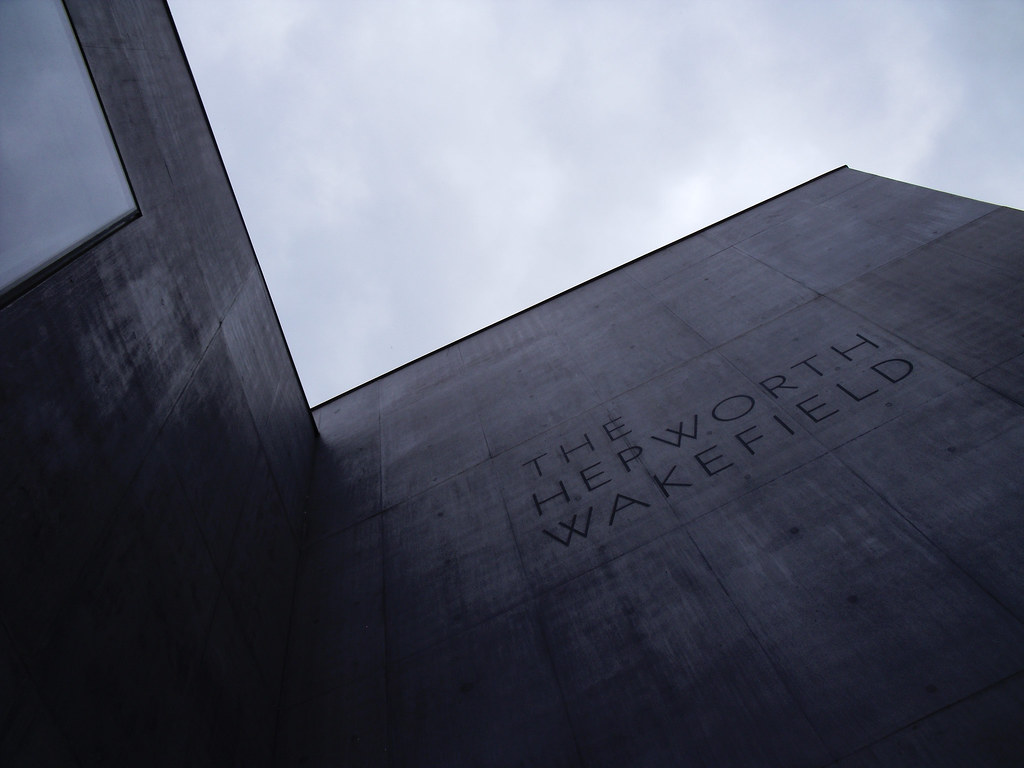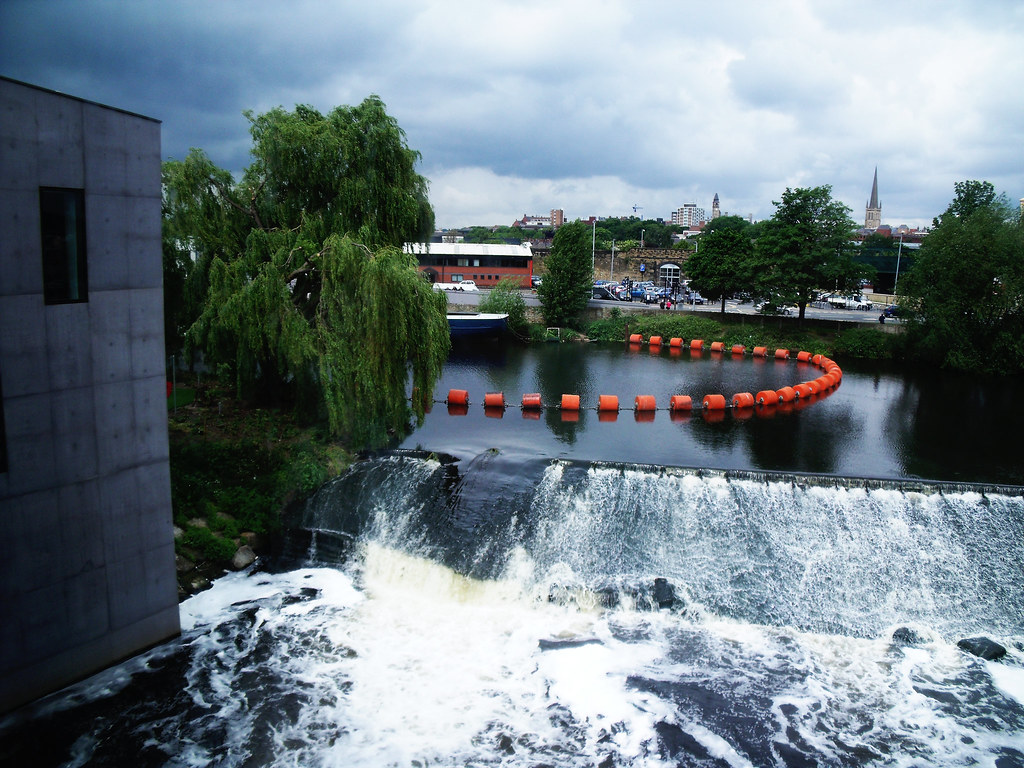 |
| Entrance (Copyright: Carrie Bayley / Luke Butcher) |
New art galleries and museums have become a mainstay of regeneration projects in recent years and examples proliferate across the world. The Hepworth at Wakefield is no different, with the David Chipperfield designed building anchoring the ‘Waterfront Wakefield’ development, although when the original RIBA international competition to find an Architect was held in 2003 the global landscape was obviously different. The gallery is likely to be one of the last of these projects in the UK but it is hoped that it will succeed where there have been so many public failures. Its success will undoubtedly be helped by the fact that entry is free, and it appears to have been embraced favourably by locals although the design of the gallery itself will also have a crucial role to play.
 |
| Gallery in relation to the Calder (Copyright: Carrie Bayley / Luke Butcher) |
Located on a prominent position on the headland of the River Calder the Gallery sits in a conservation area that includes the 18th century Grade II* Listed Navigation Warehouse (recently restored by BDP) and the Grade II listed Phoenix and Rutland Mills complex. Bounded by water on two sides the gallery complex appears to rise out of the ground, a dynamic form that could have been sculpted from a geological formation. This comparison to a rock formation is reinforced through the materiality of the building, a pigmented purple-grey concrete (self-compacted and constructed insitu) and that the material continues onto the roof. There is an interesting dialectic between the building as an imitation of natural landscape and one that carefully responds to the scale and form of the vernacular warehouse ‘sheds’.
Photographs of the gallery, which has been published extensively already, are often cropped to show its relationship to the river and vegetation, with little acknowledgement of its urban environment, particularly the busy road that runs past it.
 |
| Interior view (Copyright: Carrie Bayley / Luke Butcher) |
 |
| View from a picture window (Copyright: Carrie Bayley / Luke Butcher) |
Natural light plays an important role in the gallery designs. ‘Slot lights’ in the gallery roof bring down natural light from the top but it is the large picture windows that are the most unique aspect of the galleries. Although not in every room (situated in 6 of the 10 galleries), these windows allow visitors to orientate themselves, with carefully selected, elevated views back over the city of Wakefield, the river and new garden areas. Often as you enter a room you are greeted with a picture window that will draw you across the room and at times this can be a distraction from the art work. Despite this, you are required to turn and move back through the space, and the art work, to continue your journey, and re-engage with the art. This is a gallery then that is equally about embracing the context of the surrounding city, not just about revering the art. What also sets the Hepworth apart from other recent galleries is how the architecture is not in conflict with the art work, neither dominates.
David Chipperfield talks about the gallery and his design philosophy in terms of both formal expressions, responding to “memory and experience” and that “architecture should be both familiar and unfamiliar” (speaking to the Hepworth Wakefield). At Hepworth the scale of the building is defined by the internal experiences, the memory of domestic space, creating a form that is bold, new and but feels appropriate in its surroundings.
The gallery then oscillates between a number of conditions that are both complimentary and contrasting. Taken as an abstract structure it is both an imitation of the surrounding industrial buildings and a geological, natural formation. A solid construction method is punctured by controlled openings that allow soft, natural light to compliment the space without overwhelming the art work. Whilst the plan is executed rigorously to allow the space to make read internally, when it could so easily have be an exercise in wilful form-making.
